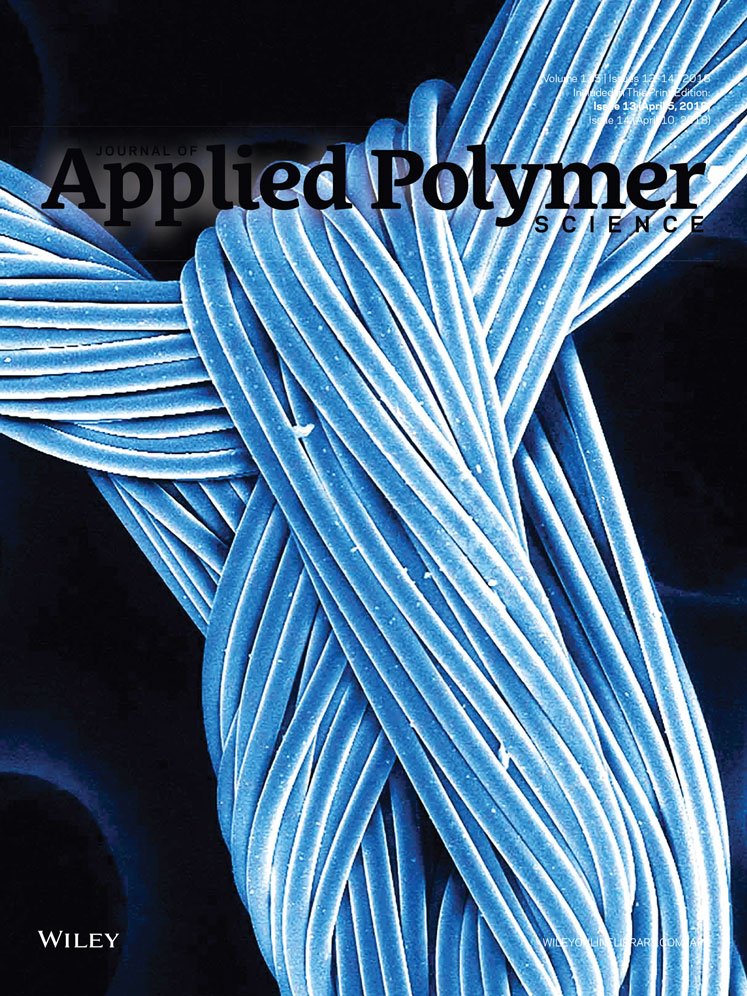Kinetic studies of POSS–DGEBA precursors derived from monoamine functional POSS using dynamic dielectric sensing and nuclear magnetic resonance
ABSTRACT
Incorporation of pre-reacted monofunctional polyhedral oligomeric silsesquioxane (POSS)–epoxy adducts dramatically improves dispersion of POSS in epoxy–amine networks. The relationship between reaction kinetics and mechanism for formation of POSS–epoxy adducts versus reaction temperature was investigated. Reactivities of epoxy–monoamine functional POSS molecules were determined using in situ reaction monitoring by dynamic dielectric sensing and 29Si NMR spectroscopy. The amine-functional POSS–epoxy isothermal reaction showed reduced reactivity due to reduced molecular mobility, that is, diffusion limitations. Kinetic parameters were determined by fitting 29Si NMR data to the model of Kamal that was extended to include diffusion. Fitting of this model to experimental data showed very good agreement over the entire conversion range for pre-reaction between amine-functionalized POSS and epoxy. An autocatalytic mechanism, the same as that for the neat epoxy–amine systems, was indicated. Gel permeation chromatography, scanning electron microscopy and transmission electron microscopy were used to investigate molecular weight evolution and morphology of final networks cured by 4,4′ diaminodiphenyl sulfone using pre-reacted POSS–epoxy adducts. POSS aggregate size decreased with increased pre-reaction temperature; more homogenous POSS dispersion was observed with higher pre-reaction temperature. Dynamic mechanical analysis demonstrated that Tg of composites decreased slightly compared to that of the neat matrix and there appeared to be little change in microstructural heterogeneity. © 2017 Wiley Periodicals, Inc. J. Appl. Polym. Sci. 2018, 135, 45994.




